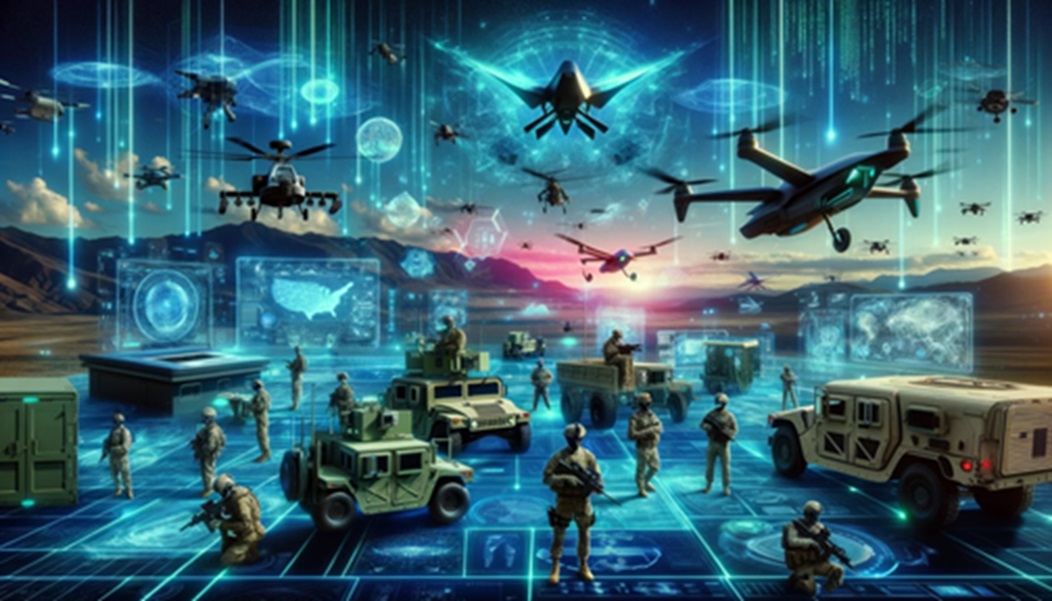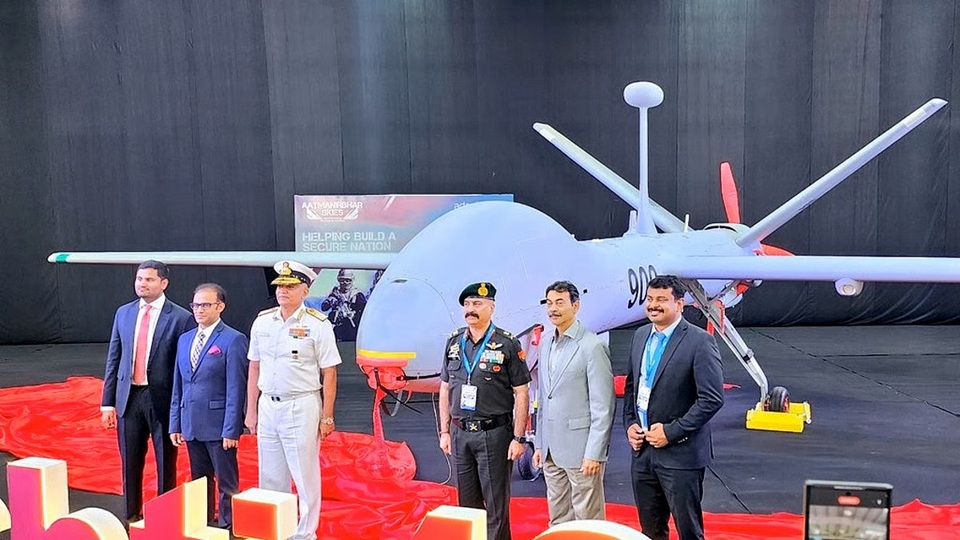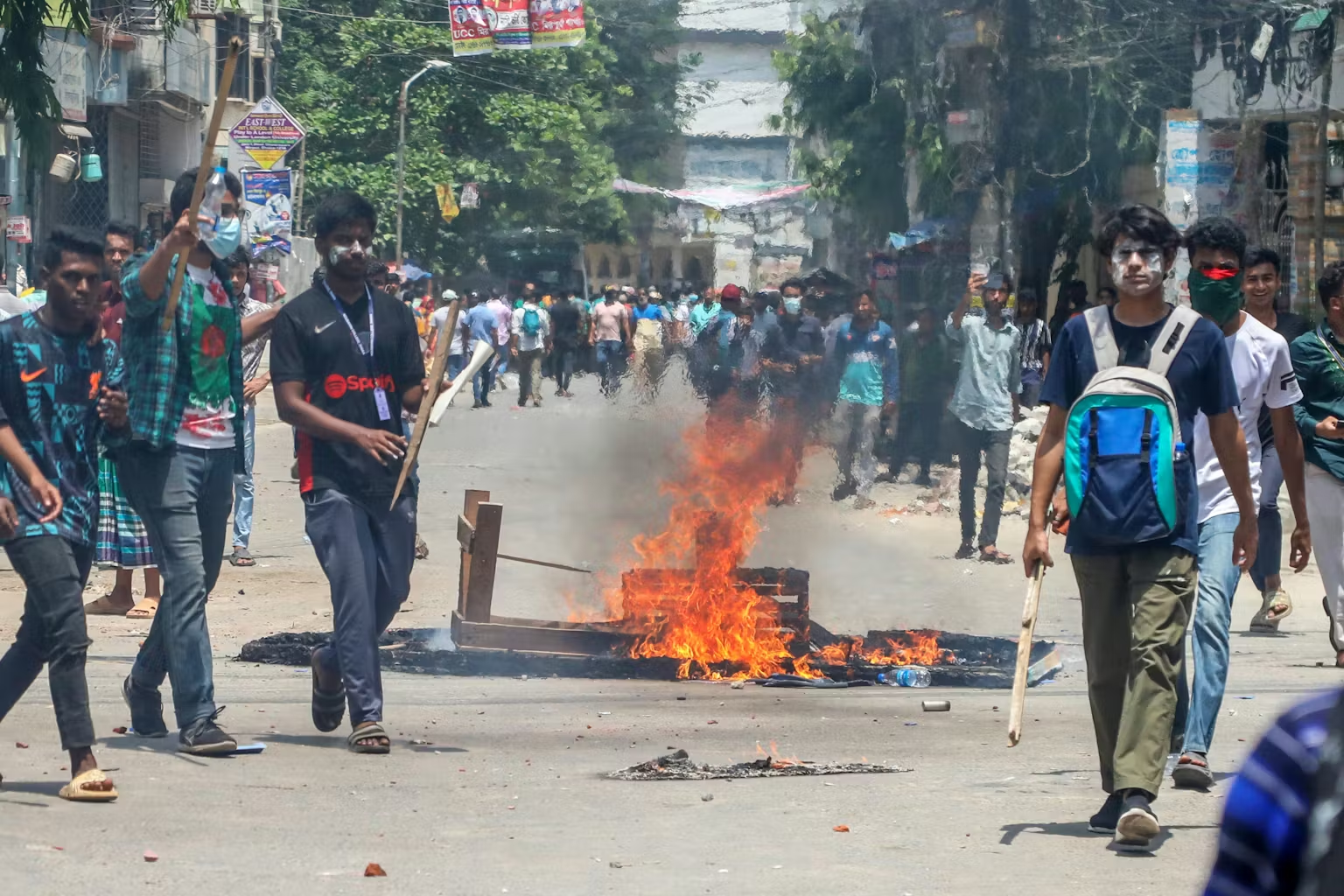Emerging technologies are transforming the global defence landscape with key developments in artificial intelligence (AI), autonomous counter-space systems and hypersonic technologies. These technologies are being used to improve defence operations, enhance military efficiency and develop new capabilities.
Ongoing conflicts in Israel and Ukraine are rapidly changing the global defence landscape by providing space for testing new weapons and new methods. This has also illustrated the importance of emerging technologies in determining competitive advantages which has compelled nations to nullify this edge by employing countermeasures such as “counter autonomy” to thwart an autonomous system’s purpose. This can be done through conventional tactics which encompass kinetic attacks as well as by using more innovative approaches such as eroding the confidence of its human operators.
Counter AI Strategies & Tactics
Artificial intelligence (AI) has emerged as one of the most widely used technologies in the current environment. This has propelled India to work to strengthen its capabilities actively. For instance, New Delhi unveiled India’s first national AI plan in 2018, established a Defence AI Project Agency and AI Council as well as released a list of 75 high-priority AI defence projects in 2022. Additionally, an AI Task Force has been set up by the Ministry of Commerce and Industry to leverage the economic benefits of emerging technologies. These efforts are to be boosted by the National Mission on Interdisciplinary Cyber-Physical Systems (NM-ICPS) which will extend advanced research in next-generation technologies such as AI, the Internet of Things, and Machine Learning.
This follows the implementation of measures such as the “AI in Defence” (AIDef) symposium and exhibition which was held in 2022 to showcase 75 novel AI products as part of “Azadi Ka Amrit Mahotsav.” Other ventures include the Adaptive Intelligent Front Towing Solution for Artillery Gun that enhances speed and is suitable for multiple terrains, including those with side and ground slopes. The Indian Defence Research Wing (AI) has likewise been utilizing AI methods for target recognition in combat.
In this context, the next step for defence-related agencies is slated to focus on the imperative of building robust counter-AI capabilities and the allocation of resources for persistent testing of the latest AI technologies used by adversaries to identify their vulnerabilities. To exploit these vulnerabilities, unconventional strategies such as the use of decoys can play a critical role and Light Detection and Ranging (LiDAR) sensors can be used to confuse autonomous systems. However, it appears there are no reported measures in place to counter AI-based attacks by New Delhi. This does not indicate that there are not any measures in place. Nevertheless, government-affiliated cybersecurity agencies in India have taken note of the issue and appear to have elevated their preparedness.
India can work on strategic counter-AI Initiatives and a comprehensive counter AI which will assist in acquiring substantial investment in countermeasures. These are likely to encompass efforts that are crucial to exploit AI errors, biases, and vulnerabilities that would allow New Delhi to outpace adversaries. Furthermore, these measures will enhance the defence establishment’s attempts to skilfully navigate AI’s limitations in adapting to novelty and secure software update channels therefore ensuring a strategic advantage.
Counter-Space Capabilities
Contemporaneously, military practitioners have stated that space has emerged as a “warfighting domain” that requires capabilities to attain “space security.” This is a stark evolution of the perception of space from a historically peaceful and permissive environment which observed the deployment of counter-space weapons as socially unacceptable. This was, primarily, attributed to the probability of the long-lasting debris fields resulting from targeted actions in space. Nevertheless, the emergence of great power competition has shaped the new narrative which has resulted in nations working on various counter-space weapons that include kinetic physical, non-kinetic physical, electronic, and cyber dimensions.
Kinetic weapons conduct co-orbital ASAT manoeuvres and direct-ascent anti-satellite (ASAT) operations that target space assets directly. Meanwhile, non-kinetic physical techniques encompass high-powered lasers, powerful microwaves, and electromagnetic pulse attacks that can inflict harm without coming into direct touch with an object. Conversely, electronic countermeasures use radio frequency to jam and interfere with communication signals. In addition, satellites could be subject to data manipulation, falsification, interception, and spying, as well as the seizure of control as unauthorized parties seize control of a satellite and carry out directives. The consequences of these attacks can range from temporary disruptions to permanent damage or loss of satellites.
This has led to the development of Quantum dots which can act as countermeasures against anti-satellite weapons by protecting satellites against missile attacks. Another option is ground-based directed energy weapons which encompass both low- and high-energy lasers, along with space-based high-power microwave systems. Meanwhile, quantum sensing can bolster these efforts by enhancing existing space-based Intelligence, Surveillance, and Reconnaissance (ISR) capabilities and offering unparalleled sensitivity and precision in detecting electric and magnetic fields, inertial forces, and temperature. Another emerging countermeasure is the use of Quantum electronic warfare (EW) which combines classical EW with quantum technologies.
India can develop these capabilities, particularly after demonstrating its expertise through the ASAT. The Indian government is reportedly considering allocating around Rs 10,000 crore for the creation of supercomputing and quantum computing hubs in partnership with the private sector. These efforts are likely to be assisted by India allowing for 100% foreign direct investment (FDI) in the manufacturing of satellite systems without prior approval while regulations for launch vehicles have been relaxed. These efforts could ultimately boost India’s countermeasure initiatives in space along with its presence in the sector. Other benefits include the indigenisation of defence, increased involvement of micro, small, and medium-sized enterprises (MSMEs), and a significant expansion of India’s market share.
Counter-Hypersonic Measures
Meanwhile, Hypersonic Weapons (HWS) have emerged as missile systems that leverage a combination of speed, accuracy, manoeuvrability, range, and payload. In the context of New Delhi’s strategic considerations, HWS play a pivotal role in achieving “dissuasive deterrence” against China which augments the military capabilities of India to impose significant costs in the event of a military misadventure. Simultaneously, these weapons are crucial for implementing a “punitive deterrence” strategy towards Pakistan. Additionally, hypersonic glide vehicles (HGV) and hypersonic cruise missiles (HCM) can be strategically positioned at lower rungs of the nuclear escalation ladder compared to ballistic missiles.
However, alongside the pursuit of hypersonic capability, countries including India should invest in active and passive countermeasures to safeguard critical assets. For instance, the US and Japan working to negotiate and finalize a new deal to develop a hypersonic missile interceptor. As such, given the limited effectiveness of ground-based phased array radars against HWS, a space-based infrared sensor satellite network can be utilised for crafting a robust defence mechanism. Furthermore, the US’s Aegis ships, armed with sea-based terminal capabilities, are now capable of intercepting certain hypersonic threats during the terminal phase of the missile’s trajectory.
Similarly, in recent years, counter-hypersonic research and development has emerged as a priority for advanced missile threat mitigation. The proposed countermeasures include sensor systems and command and control infrastructure capable of monitoring hypersonic threats, providing alerts and enhancing domain awareness. Additionally, countries can integrate tracking capabilities across space-based, ground-based, and sea-based radar systems. Furthermore, a key component of the defence strategy against HGVs is the development of the Glide Breaker creates an interceptor capable of denying hypersonic threats during the glide phase. Other countermeasures include an interceptor such as the SM-3 or its derivative, Terminal High Altitude Area Defense (THAAD), and a Sea-Based Terminal program using the SM-6 adapted for this purpose. New Delhi has been cognizant of these developments and has funded the successful launch of the indigenously-developed Hypersonic Technology Demonstrator Vehicle (HSTDV) by the Defence Research & Development Organisation (DRDO) which will assist in the progression to a comprehensive hypersonic cruise missile system.
Notably, future shared threats and vulnerabilities including in space will likely compel New Delhi to enhance its collaboration with Middle and Great Powers. This could take the form of increased commitment within the Quad framework to develop countermeasures for emerging technologies. Furthermore, India could engineer the development of minilaterals or multilaterals focused on a wide array of issues emanating from a single domain through joint countermeasure research and development, particularly as nations such as China prioritise similar objectives.
Title image courtesy: LinkedIn
Disclaimer: The views and opinions expressed by the author do not necessarily reflect the views of the Government of India and Defence Research and Studies









